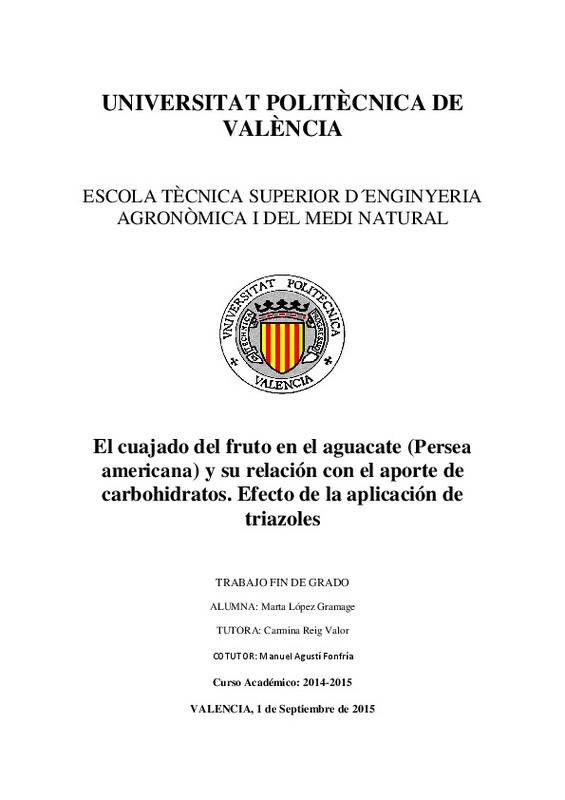JavaScript is disabled for your browser. Some features of this site may not work without it.
Buscar en RiuNet
Listar
Mi cuenta
Estadísticas
Ayuda RiuNet
Admin. UPV
El cuajado del fruto en el aguacate (Persea americana) y su relación con el aporte de carbohidratos. Efecto de la aplicación de triazoles
Mostrar el registro completo del ítem
López Gramaje, M. (2015). El cuajado del fruto en el aguacate (Persea americana) y su relación con el aporte de carbohidratos. Efecto de la aplicación de triazoles. http://hdl.handle.net/10251/55660.
Por favor, use este identificador para citar o enlazar este ítem: http://hdl.handle.net/10251/55660
Ficheros en el ítem
Metadatos del ítem
| Título: | El cuajado del fruto en el aguacate (Persea americana) y su relación con el aporte de carbohidratos. Efecto de la aplicación de triazoles | |||
| Autor: | López Gramaje, Marta | |||
| Director(es): | ||||
| Entidad UPV: |
|
|||
| Fecha acto/lectura: |
|
|||
| Resumen: |
[ES] En el aguacate, existe una gran competencia nutricional entre el desarrollo vegetativo y reproductivo, que determina el porcentaje de cuajado. De hecho, la floración y la primera brotación y crecimiento de los brotes ...[+]
[EN] In avocado gibberellic acid (AG) applied at a concentration of 25 mg/l at the onset of flowering
immediately increased vegetative growth, whereas paclobutrazol (PBZ), an inhibitor of the
gibberellin biosynthesis, ...[+]
|
|||
| Palabras clave: |
|
|||
| Derechos de uso: | Reserva de todos los derechos | |||
| Editorial: |
|
|||
| Titulación: |
|
|||
| Tipo: |
|
recommendations
Este ítem aparece en la(s) siguiente(s) colección(ones)
-
ETSIAMN - Trabajos académicos [3547]
Escuela Técnica Superior de Ingeniería Agronómica y del Medio Natural







